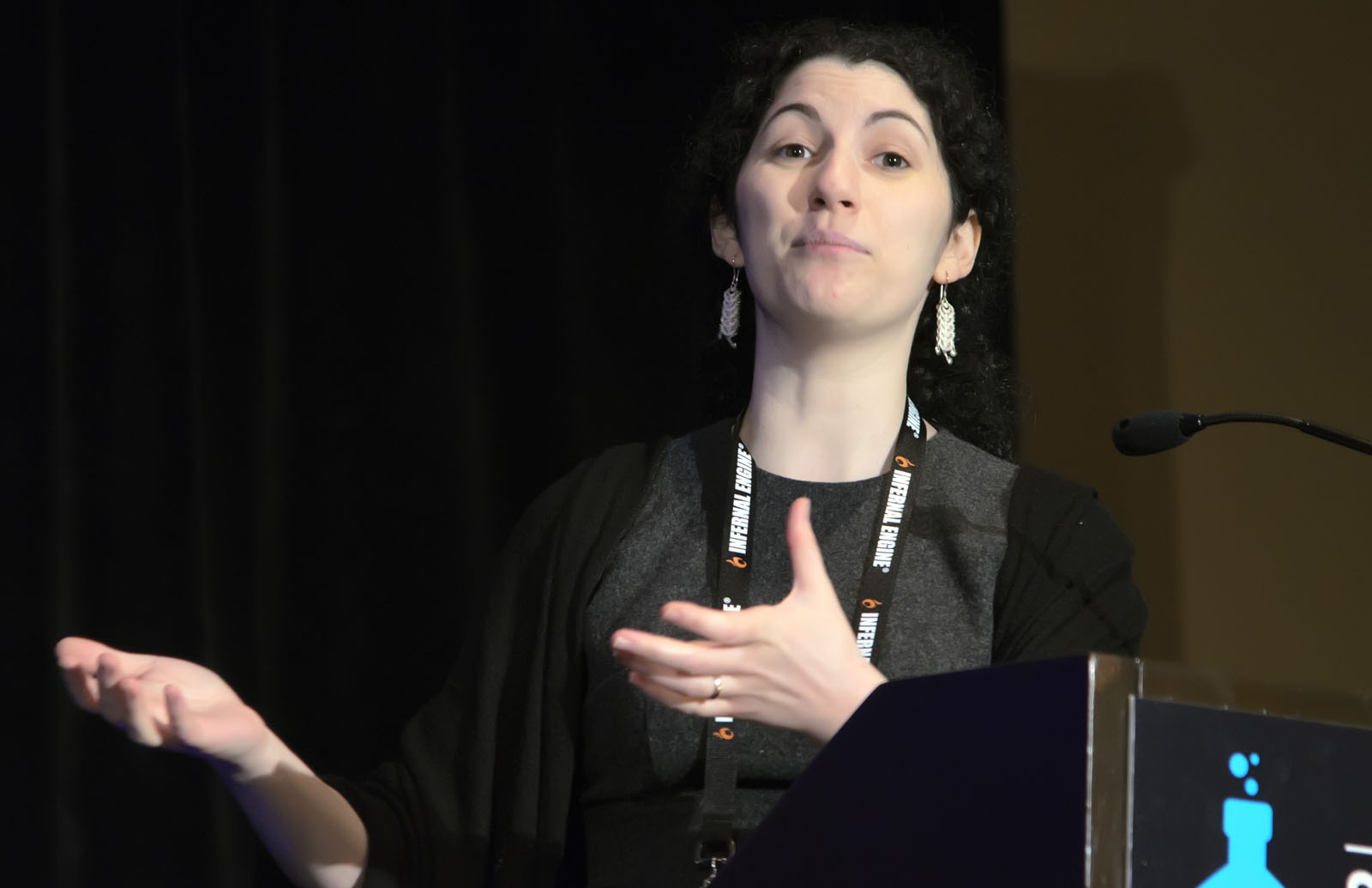Game Developers Conference 2011: Day 1
GDC 2011, Day 1
The gaming business has grown to such massive proportions that there are now multiple Game Developers Conferences worldwide. Still, the San Francisco edition of GDC is the granddaddy of them all, and this year marks the 25th anniversary of the show that began in Chris Crawford’s living room as the Computer Game Developer’s Conference.
This year’s GDC is actually multiple conferences under one umbrella. The first two days, which are actually before the main conference begins, include tutorial sessions, the Serious Gaming Summit, the Artificial Intelligence Summit, and the GDC Smartphone Summit. I dropped in on some of the serious game sessions, plus sat in on several Microsoft-sponsored sessions on the technical underpinnings of its hot new Kinect peripheral.
Epidemiology And the World of Warcraft
The first session I attended dealt with the spread of infectious disease.
More specifically, Dr. Nina Fefferman, a mathematical infectious disease epidemiologist with Rutgers University, discussed using World of Warcraft as a tool for studying the spread of infectious disease.
In 2005, Blizzard introduced a new zone for players seeking end-game content called Zul'Gurub, with a final boss named Hakkar. One of Hakkar’s attacks was a disease called Corrupted Blood. A level 60 character would take damage from the disease during the Hakkar encounter, but would usually stay alive long enough that a team of characters working together could kill the boss. At that point, the players infected would be cured.
What Blizzard didn’t predict was that high level characters, infected with the disease, would teleport out of Zul-Gurub while still afflicted, returning to major cities and spreading Corrupted Blood to not only other high-level toons, but also low-level characters that died much more quickly. Blizzard actually had to push patches and force server restarts in order to stop the spread.
Get Tom's Hardware's best news and in-depth reviews, straight to your inbox.
Interestingly, when a character died of the disease, it would leave a skeleton. This allowed Feffereman and her colleagues to track its progress, as well as observe player behavior. The data collected helped modify mathematical models used by epidemiologists to simulate the spread of an infectious disease.
-
sudeshc Very Very Interesting...........lets hope this brings more and more good games :D.Reply
I also do liked that WOW disease thing its really real world like. -
Marcus52 Now that we can have easily enough have 10-bit hardware on our gaming machines, it would be awesome if game devs and others would make the software to keep up.Reply
(For those who want to argue that we can't see a billion colors, look up color gamut, sRGB and AdobeRGB, and get to know what a color space diagram shows. I also suggest this article:
http://www.100fps.com/how_many_frames_can_humans_see.htm
which will give you some idea about what the human eye can see, and why people have different ideas about the limitations.)
;)
-
utengineer sudeshcI also do liked that WOW disease thing its really real world like.Reply
WOW is a disease. Symptoms include lack of social skills, greasy hair, muscle atrophy, sunlight aversions, and.....increased instances of hot girls avoiding you like the plague. ;)
-
Snipergod87 The woman talking about the WoW Plague, her earings make her look like she could be a character from WoW.Reply -
rawoysters The only thing I want to hear from Microsoft is that they are getting rid of "Games For Windows Live". I am tired of buying a game and having to go through all that crap before I can play it.Reply -
pinkfloydminnesota Please ask guys from Rockstar if there's any chance of pc versions of red dead or noir?Reply -
drudometkin rawoystersThe only thing I want to hear from Microsoft is that they are getting rid of "Games For Windows Live". I am tired of buying a game and having to go through all that crap before I can play it.Reply
Such as? Logging in one time at installation for XBL? What is all the crap you have to go through?
-
rawoysters "Such as? Logging in one time at installation for XBL? What is all the crap you have to go through? "Reply
3rd party software that I am blackmailed to use even though I have no interest in it whatsoever. I pay big money for games and I don't expect to have to install software on my computer that I DON'T want in order to play it. It's like buying a new car and having to sign in with "Mobil" or "Shell" before I drive it each time. -
hurfburf rawoysters"Such as? Logging in one time at installation for XBL? What is all the crap you have to go through? " 3rd party software that I am blackmailed to use even though I have no interest in it whatsoever. I pay big money for games and I don't expect to have to install software on my computer that I DON'T want in order to play it. It's like buying a new car and having to sign in with "Mobil" or "Shell" before I drive it each time.Reply
Ah, so the same nonsense people say about Steam, then? Got it, thanks.
